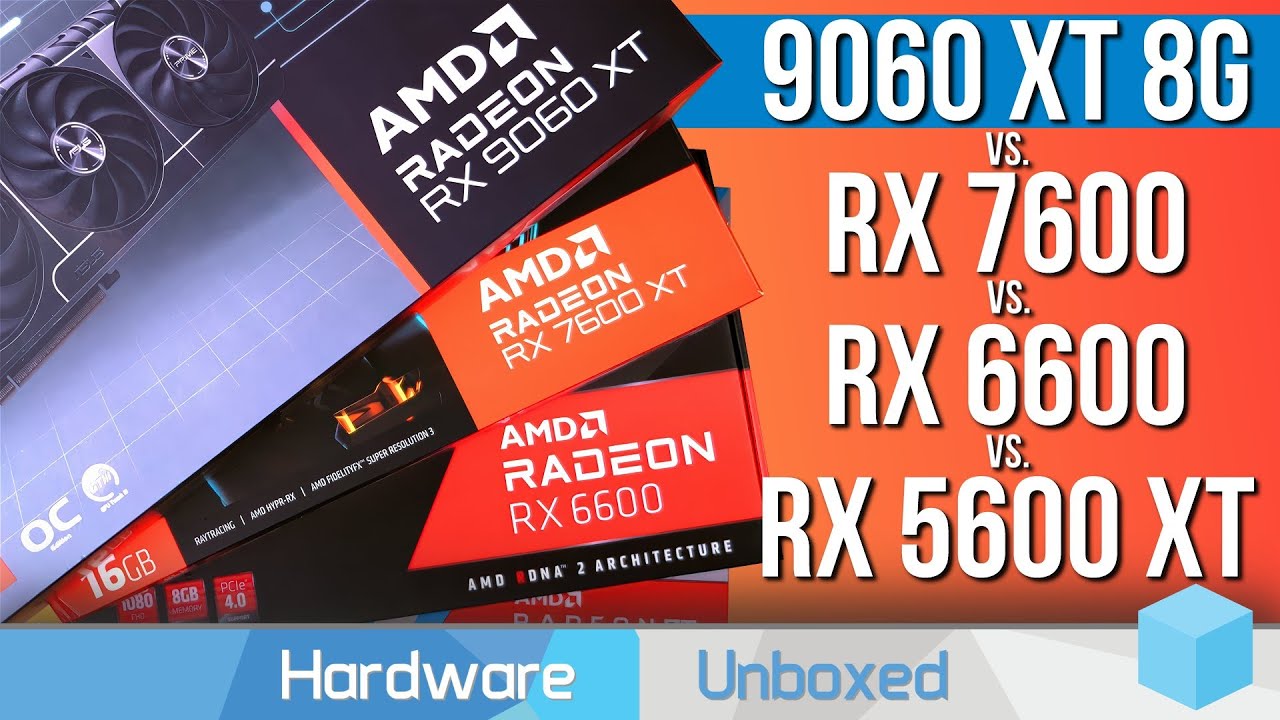The video examines AMD’s Radeon GPUs in the $300 range over the past five years, highlighting modest performance improvements from the RX 5600 XT through to the RX 9600 XT 8 GB, with the latest model offering the best performance but limited by its 8 GB VRAM and reliance on PCIe 5.0 for optimal results. It concludes that while the RX 9600 XT is AMD’s strongest budget GPU to date, gamers should consider investing in 16 GB variants for better future-proofing, as 8 GB models may struggle with modern games and higher settings.
The video provides an in-depth look at AMD’s Radeon GPUs in the $300 price range over the past five and a half years, focusing on models like the RX 5600 XT, RX 6600, RX 7600, and the latest RX 9600 XT 8 GB. The RX 5600 XT launched in 2020 was seen as a decent but not groundbreaking option, offering reasonable value at its price point. However, the RX 6600, released a year later, was widely regarded as disappointing due to its minimal performance gains over the 5600 XT despite a higher price tag. AMD’s RX 6600 only became a popular choice after price drops following the cryptocurrency mining crash, making it a good budget pick at around $200.
The RX 7600, released in mid-2023, showed better performance improvements over the RX 6600 but still struggled to justify its initial $270 price, especially given the availability of similar performance at lower costs from previous generations. The RX 9600 XT 8 GB model, released in 2025, demonstrated the most significant generational leap in performance among these GPUs, outperforming the RX 7600 by a substantial margin in various games at both 1080p and 1440p resolutions. However, its limited 8 GB VRAM capacity remains a critical drawback, especially for future-proofing and handling modern games at higher settings.
A key technical advantage of the RX 9600 XT 8 GB is its use of PCIe 5.0 with 16 lanes, providing significantly higher bandwidth compared to the PCIe 4.0 interfaces used by older models. This increased bandwidth helps mitigate some performance issues caused by the limited VRAM in demanding games, allowing the 9600 XT to maintain stronger performance even when VRAM is exceeded. However, in systems limited to PCIe 3.0, this advantage disappears, and performance drops to levels comparable with older GPUs like the RX 6600 and RX 7600.
When considering value for money based on MSRP and inflation adjustments, the RX 6600 initially offered poor value at launch but later became competitive at discounted prices. The RX 7600 provided the best value uplift over its predecessor, while the RX 9600 XT 8 GB, despite its performance gains, offered less value improvement due to its higher price. The video emphasizes that while the 8 GB 9600 XT is a strong performer, the limited VRAM at this price point is a significant concern, especially when compared to consoles that have more VRAM and are already several years old.
In conclusion, the video advises caution when considering 8 GB GPUs like the RX 9600 XT 8 GB and RTX 5060 for a $300 budget, recommending instead to invest slightly more for the 16 GB versions to ensure better longevity and performance in the coming years. The host stresses that this content is not a full review but a comparative look at AMD’s offerings over time, highlighting the stagnation and incremental improvements in Radeon’s budget GPU segment. Ultimately, while the RX 9600 XT 8 GB is AMD’s best $300 product in years performance-wise, its VRAM limitation makes it a less attractive buy for gamers seeking future-proofing.
